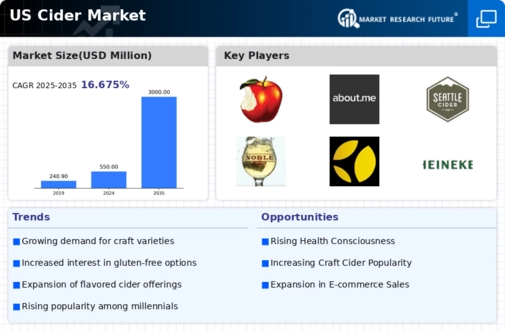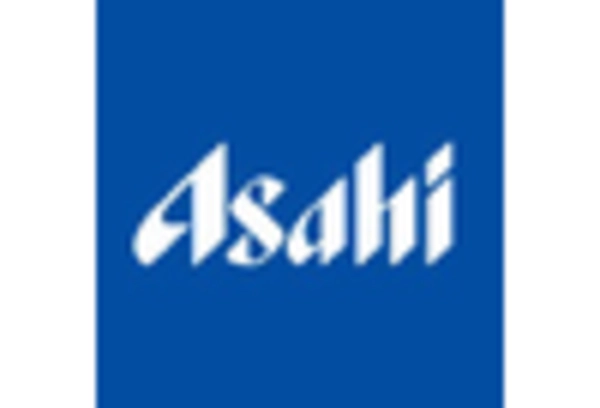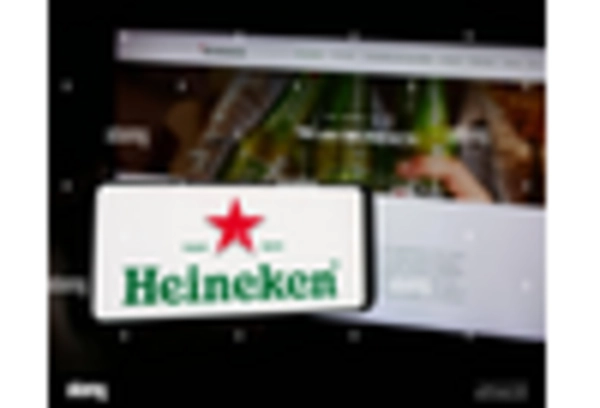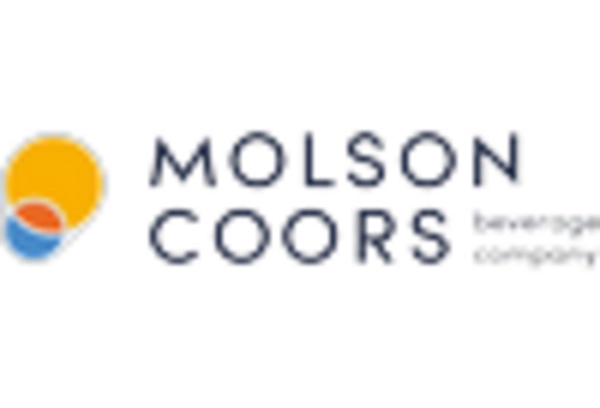Emerging Flavor Innovations
The cider market is currently experiencing a surge in flavor innovations, which appears to be a key driver of growth. Producers are increasingly experimenting with unique ingredients, such as exotic fruits and spices, to create distinctive flavor profiles. This trend not only attracts adventurous consumers but also caters to the growing demand for artisanal products. According to recent data, the introduction of innovative flavors has contributed to a 15% increase in sales within the cider market over the past year. As consumers seek new taste experiences, the emphasis on flavor diversity is likely to continue shaping the market landscape.
Increased Distribution Channels
The expansion of distribution channels is significantly impacting the cider market. Retailers are increasingly recognizing the potential of cider as a mainstream beverage, leading to its availability in a wider range of outlets, including supermarkets, convenience stores, and online platforms. This increased accessibility has contributed to a 10% growth in market penetration over the past year. Furthermore, partnerships with bars and restaurants are enhancing visibility and consumer trial. As distribution networks continue to evolve, the cider market is likely to benefit from enhanced consumer reach and sales opportunities.
Seasonal and Festive Promotions
Seasonal and festive promotions are playing a crucial role in driving sales within the cider market. Producers are capitalizing on holidays and seasonal events to launch limited-edition flavors and promotional campaigns. This strategy not only boosts sales during peak seasons but also creates a sense of urgency among consumers. For instance, autumn-themed ciders have shown a 25% increase in sales during the fall months. As the cider market continues to leverage seasonal marketing tactics, it is expected that these promotions will remain a vital component of overall sales strategies.
Sustainability and Organic Production
Sustainability has emerged as a pivotal driver in the cider market, with consumers increasingly favoring organic and environmentally friendly products. The demand for organic ciders has seen a notable rise, with sales growing by approximately 20% in the last year. This shift reflects a broader trend towards health and environmental consciousness among consumers. Producers are responding by adopting sustainable practices, such as sourcing local ingredients and minimizing waste. As the cider market aligns with these values, it is expected that the focus on sustainability will further enhance brand loyalty and consumer engagement.
Changing Demographics and Consumer Preferences
The cider market is witnessing a shift in demographics, with younger consumers showing a growing preference for cider over traditional alcoholic beverages. This trend is particularly evident among millennials and Generation Z, who are drawn to the unique flavors and perceived health benefits of cider. Data indicates that approximately 30% of cider consumers are now under the age of 35, highlighting a significant demographic shift. As these younger consumers prioritize experiences and quality over quantity, the cider market is likely to adapt its marketing strategies to cater to this evolving consumer base.

















Leave a Comment